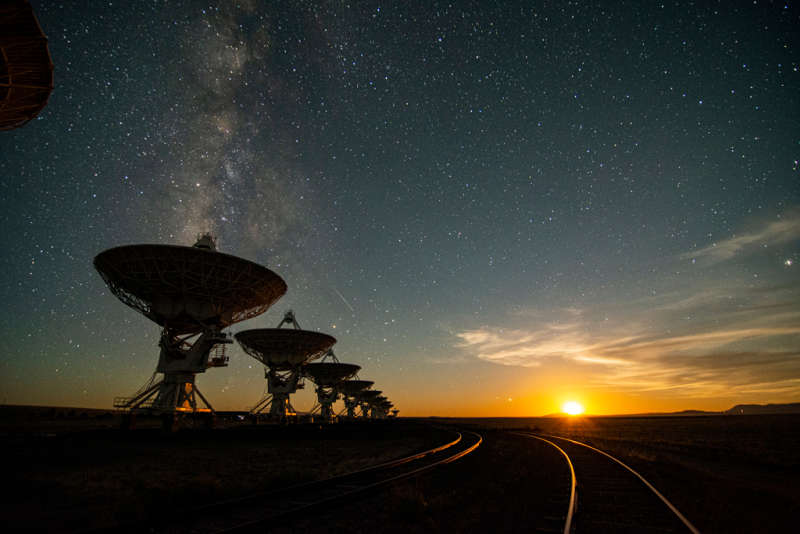Explanation: An inspirational sight, these giant dish antennas of the Karl G. Jansky Very Large Array (VLA) rise above the New Mexico desert at moonset. Mounted on piers but transportable on railroad tracks to change the VLAБs configuration, its 27 operating antennas are each house-sized (25 meters across) and can be organized into an array spanning the size of a city (35 kilometers). A prolific radio astronomy workhorse, the VLA has been used to discover water on planet Mercury, radio-bright coronae around stars, micro-quasars in our Galaxy, gravitationally-induced Einstein rings around distant galaxies, and radio counterparts to cosmologically distant gamma-ray bursts. Its vast size has allowed astronomers to study the details of radio galaxies, super-fast cosmic jets, and map the center of our own Milky Way. Now 40 years since its dedication the VLA has been used in more than 14,000 observing projects and contributed to more than 500 Ph.D. dissertations. On October 10, the National Radio Astronomy Observatory will host a day-long online celebration of the VLA at 40 featuring virtual tours and presentations on the history, operations, science, and future of the Very Large Array.
1999 2000 2001 2002 2003 2004 2005 2006 2007 2008 2009 2010 2011 2012 2013 2014 2015 2016 2017 2018 2019 2020 2021 2022 2023 2024 2025 |
Январь Февраль Март Апрель Май Июнь Июль Август Сентябрь Октябрь Ноябрь Декабрь |
NASA Web Site Statements, Warnings, and Disclaimers
NASA Official: Jay Norris. Specific rights apply.
A service of: LHEA at NASA / GSFC
& Michigan Tech. U.
|
Публикации с ключевыми словами:
VLA - radiotelescope - Радиотелескоп
Публикации со словами: VLA - radiotelescope - Радиотелескоп | |
См. также:
Все публикации на ту же тему >> | |
